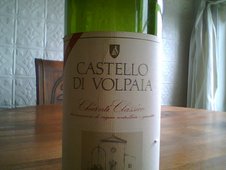I've written about beer growlers. I've written about wine on tap. And now it all comes together in this:
Growlers for Grapes
By Robert Simonson
If you live and drink in a major city, you have probably encountered wine on tap, and the proliferation of growlers, those glass hillbilly jugs that enable you to take draft beer from a bar or liquor store to your home. But unless you live in Greenville, S.C., you may not have met the lovechild of those two trends: the wine growler.
Last week, the Community Tap, a liquor shop in Greenville that sells wine and craft beer, dedicated one of its taps to take-away wine. The principle is the same as with beer growlers. You purchase a 32-ounce or 64-ounce vessel and fill it up with the keg wine on tap.
“One of the reasons that we wanted to start the store was we wanted to do beer growlers,” said the co-owner Ed Buffington, who opened Community Tap last July and now has 10 taps devoted to American microbrews and some European beers. “There weren’t too many people doing it in South Carolina.”
A visit from Dan Donahoe from Silvertap wines in California, which specializes in tank wine, prompted Mr. Buffington to think beyond beer. “I’ve been doing this for a long time,” said Mr. Donahoe, whose clients are almost all restaurants. “From my experience, they are the only place doing wine in growlers retail. A lot of people have wine on tap. I’m in discussions with very large grocery stores about it. But nobody’s really pulled the trigger and done it until they did.” (In recent years, wine growlers have cropped up in tasting rooms in places like California, Michigan and Pennsylvania.)
The Community Tap’s debut growler wine is Silvertap’s 2008 cabernet sauvignon. Both Mr. Donohue and Mr. Buffington see two main advantages to growler wine: a smaller carbon footprint and a smaller tab. A 32-ounce growler of Silvertap cab goes for $16.99, the same cost of Donahoe Teira Cab in a 750-milliliter bottle. “That’s 25 percent more wine at the same price,” Mr. Buffington said.
Charles Bieler, a founder of the New York-based keg wine company theGotham Project is hoping wine growlers can find their way to New York, if Albany can be made to see the light.
“Every state has a different set of laws,” Mr. Bieler said. “From a retail point of view, this is something we’ve been looking into. There’s a law that says, with wine, it’s illegal. But it’s never been challenged.”
“I know a lot of retailers in the city who would jump on it in a second,” he added.









